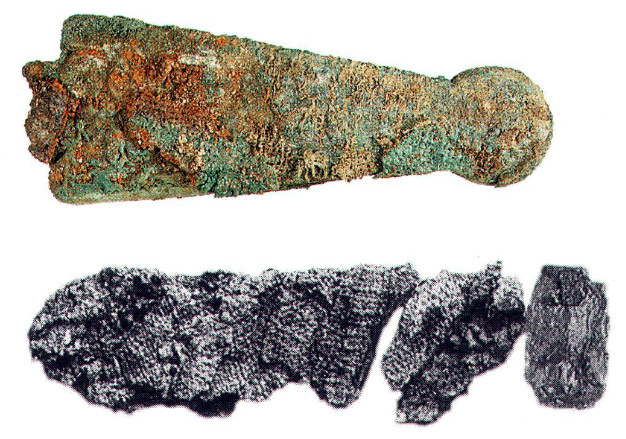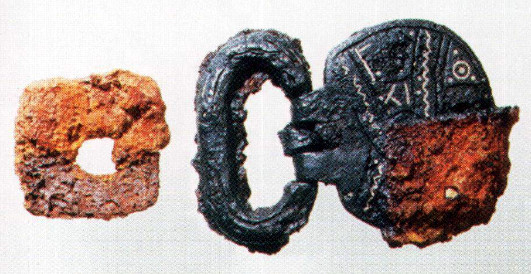
Buckle with textile remains from young woman’s burial, Flurlingen, canton Zurich
Online Via Zoom https://buytickets.at/medievaldressandtextilesociety/1677897
Ticket price: Free for Members
with Dr Olga Magoula-Bamford
This event will take place over Zoom and be recorded for members to view afterwards. Members should register at Ticket Tailor using the access code emailed 24 April.
This paper will present a brief overview of some of the most geographically and culturally-specific data we have today about the archaeological textiles and dress accessories found in early medieval localities beyond the Alps and the Rhine, in the areas occupied by the Alemanni and Bawuvarii according to early medieval written sources. We can discuss possible interpretations of funerary textiles and dress based on materials pertaining to dress and dress accessories preserved alongside metal or leather objects from case-studies identified and recorded in a number of accessible data bases and publications. These offer detailed tables of weave types and techniques like the evidence or not of Rippenköper, information about fibres and thread counts. Sometimes it has been possible to trace the materials used like flax and hemp, wrapped items in parcels of cloth, particular uses of leather, tablet-woven belts and leather-lined textiles and accessories.
The main focus first will be a discussion of data from case-studies drawn from the excavations of Flurlingen, Kallnach, Flaach, Lauchheim and Waging am See. The primary issues in this discussion will include: the presence or not of recurrent modes of funerary attire and accessories, their possible functions, locally specific materials and the range of techniques, specific types of imports found on or around the body, which were the most pronounced elements of attire in these localities, identification of decorative patterns and display areas on the body, how decoration was woven through different materials, e.g. hemp, flax or wool or if this was attached by other means, leather, starting and finishing borders, combination of other organic materials used in headwear and dress.
On a second level, the discussion will evolve into a comparative analysis of the information and possible interpretations of these facts about dress put in the wider context of the northern Frankish world. It is interesting to compare archaeological textile finds matching the categories of analysis examined above from excavations in Normandy like Louviers and Harfleur or Varangéville in Alsace to see if these attest different clothing practices specific to a particular point in time by distinct cultural groups.
Finally, these representations will be discussed again in the light of what the Frankish authors tell us about them.

